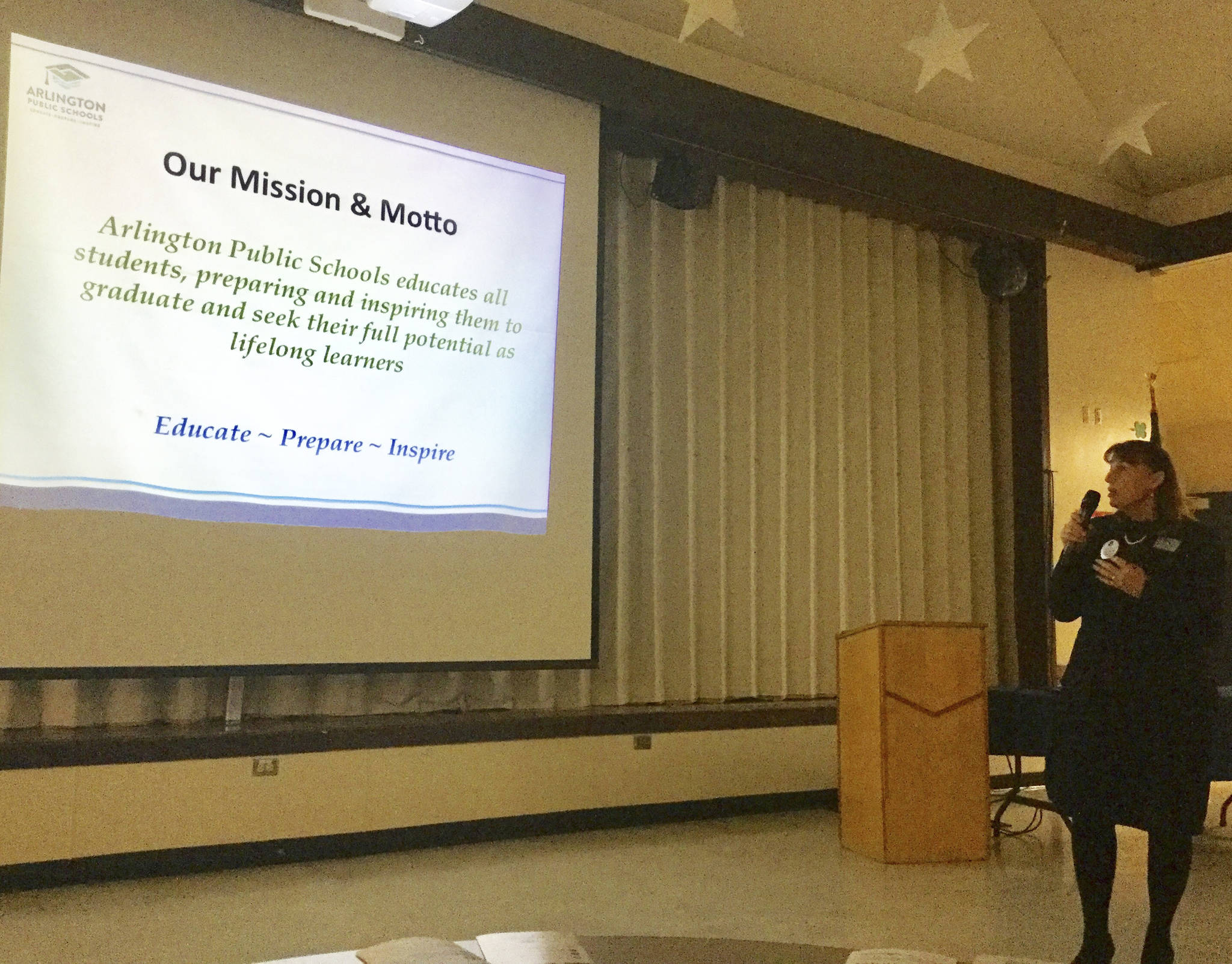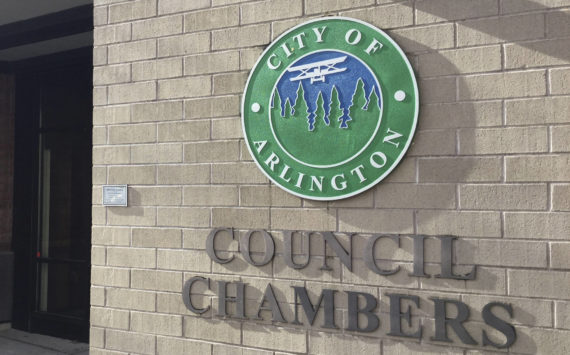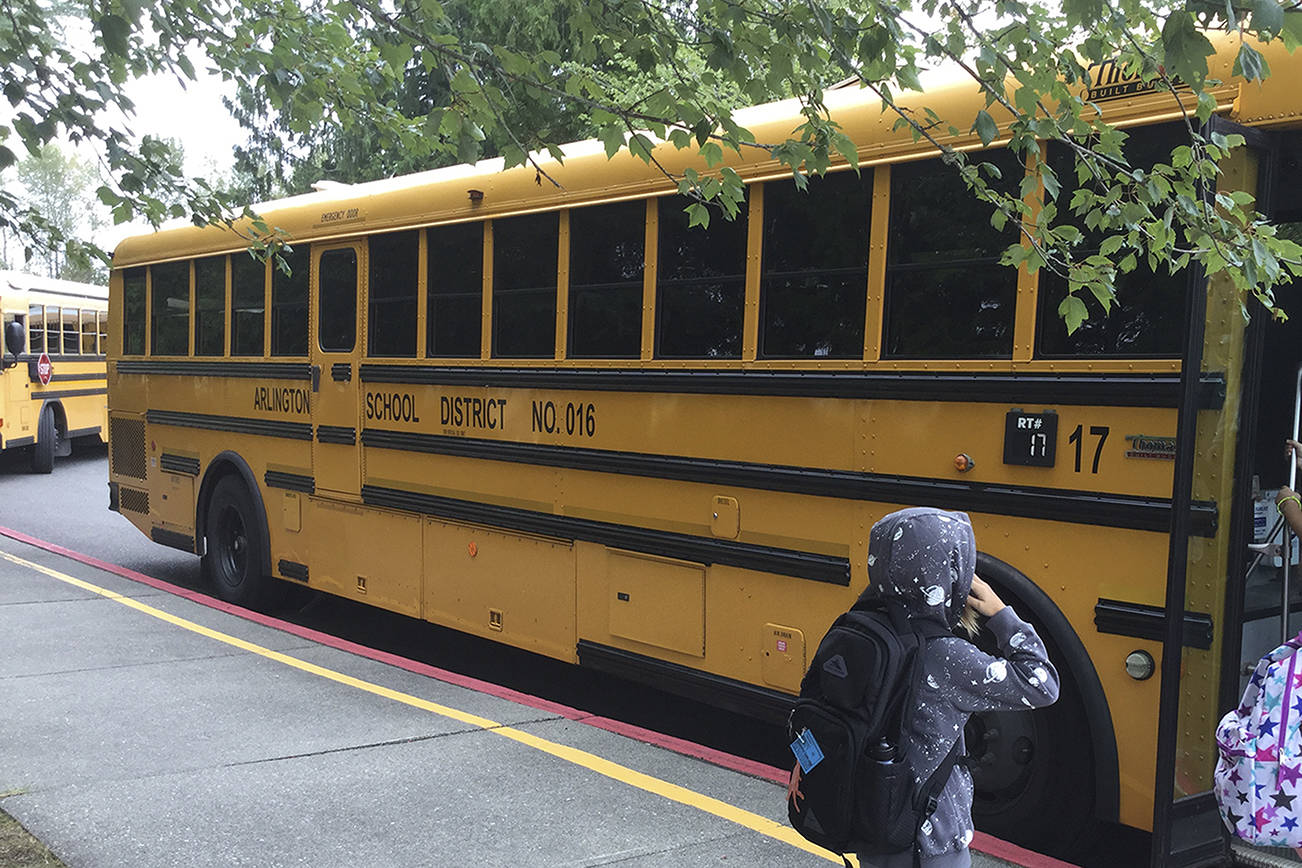ARLINGTON – Long-term strategic planning completed by Arlington Public Schools last year is turning words into action for how the district will deliver quality education and answer to parents and the community they serve.
That framework goes a long way to answer the question of “what” education will look look moving forward.
But Superintendent Chrys Sweeting only needs one – maybe two words – to answer the “why” question.
“Students – student learning,” Sweeting said during her State of the District address Thursday night at Post Middle School. “That’s why we do it.”
About 50 people attended the event that featured a progress report on the strategic plan, an appeal to support the Arlington High School Air Force JROTC program that needs to boost enrollment to avoid closure, and pies courtesy of the district’s Culinary Arts Program to warm up the crowd.
The event was preceded by a walking tour of Post Middle School, which would be replaced with a new school as the main entree in the district’s $107.5 million schools and safety measure going to voters Feb. 13.
Sweeting said last year district leaders, teachers, staff and classified staff were encouraged to assume positive intent and “be kinder than necessary” in all their activities to best serve the more than 5,500 students who attend Arlington schools.
“We want to make sure that every student has the resources and tools they need to learn and achieve,” Sweeting said. That includes how APS allocates and manages its people and taxpayer dollars so that there is more equity at all levels. The goal of the district’s equity and diversity work is to build a “culture of inclusiveness in a deeper capacity.”
Other administrators shared progress in student learning and achievement, a safe environment to learn in, best use of resources and the importance of partnering and communicating with parents and the community toward making lifelong learners of their kids.
Asst. Superintendent Kathy Ehman said the district has invested in professional learning communities, targeted professional development training and research-based curricula that not only can lead to better results for students, but also help identify gaps in equity.
Kari Henderson-Burke, executive director of teaching and learning, pointed to the Open Doors program launched last fall at Weston High School that is providing dozens of students who had dropped out another chance at getting their diploma or GED.
She also talked about the new early language arts curriculum that helps students learn in new, challenging ways. Henderson-Burke said the district has new assessment tools to measure progress in ELA, as well as for reading and math.
Brian Lewis, executive director of operations, said in 2017 the district stepped up its safety efforts, deploying crime prevention through environmental design measures. Using Arlington police crime data, the district was able to install gates and other equipment at some schools to reduce property crimes. He also said the “Arlington Ready” program is helping spruce up and better maintain schools, thanks to the help of students, staff and community members.
In finances, executive director Gina Zeutenhorst said when the district found more dollars in its fund balance, it opted to pay one-time costs of $250,000 for all school supplies and equipment that especially helps families having a tough time making ends meet. Another $104,000 went toward behavioral support and $100,000 toward buses.
Human Resources director Eric DeJong said the district’s teacher retention rate has improved, augmented by a diverse, veteran staff that sees Arlington as “a great place to work and live.” He added that the ethnicity breakdown of teachers and staff mirrors the population quite a bit.
Sweeting said the road ahead is not without challenges. She said chronic absenteeism is a problem that Arlington, like other districts, is not immune to. Chronic absenteeism across all grades is around 20 percent, equivalent to 18 days out of the school year. Different schools have creative incentive and other programs to address the problem.
Disparity in test scores within the English Language Learner and special education programs has administrators taking a deeper look at what can be done to help those students. Other challenges include the need to improve in math, raising passage rates in grades 7th through 10th grades, and facility needs related to safety and having enough room to teach, the latter of which is a central part of the school bond in February.
Sweeting said communication and engagement with the community are important and was a key reason she took the Arlington job.
“We need to have our parents and community members to be partners with us,” she said.
The district hosted a “Know Our Schools” field trip last fall that loaded parents and others on a school bus to visit schools and see education up close.
“We want community members to get into the classrooms to see learning taking place,” Sweeting said.







